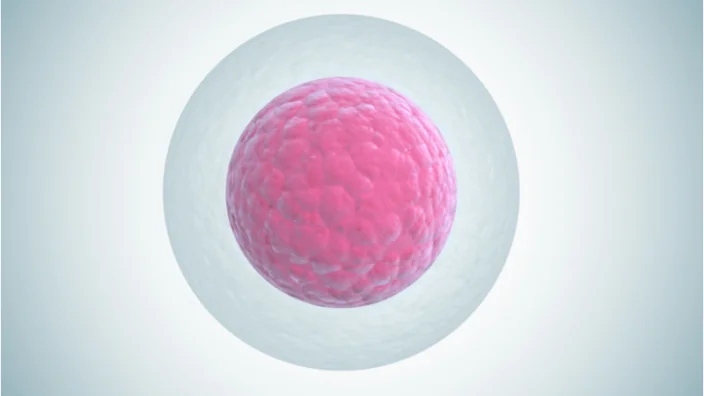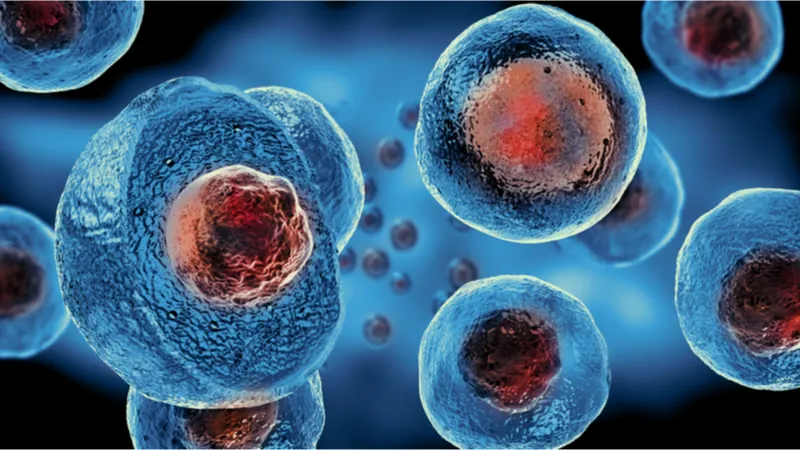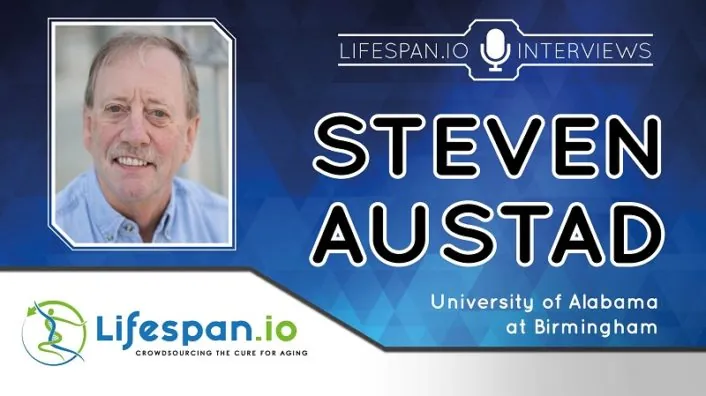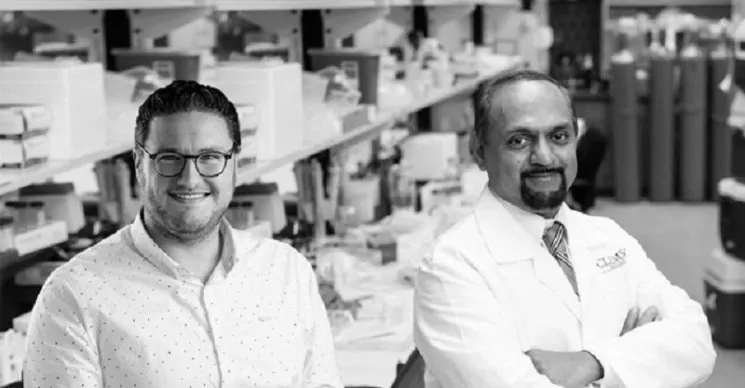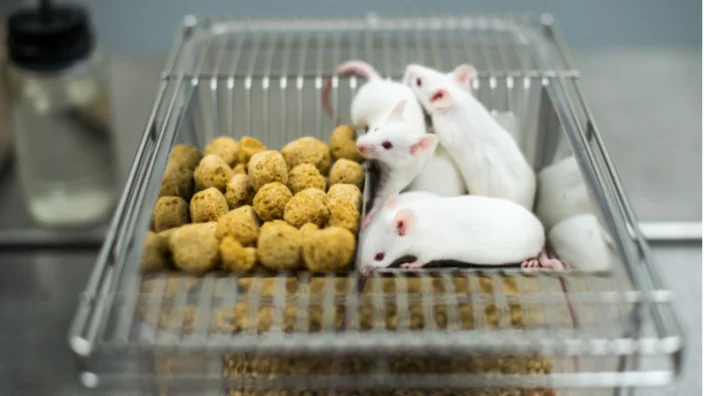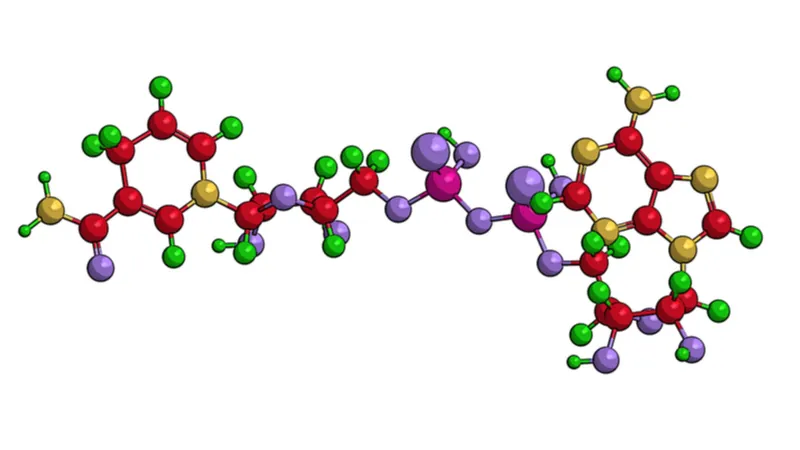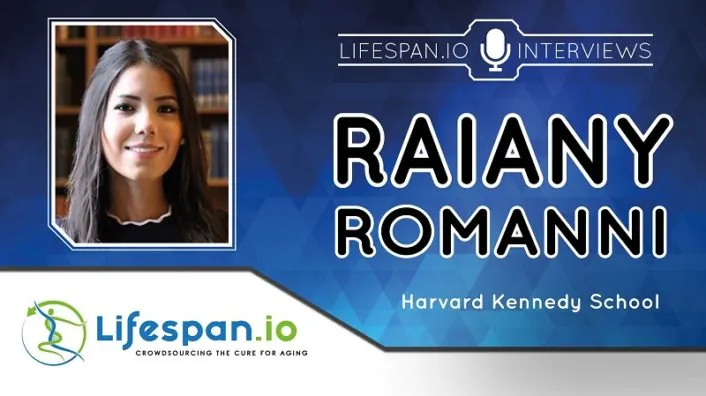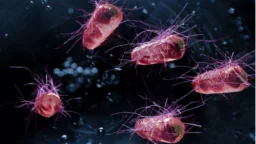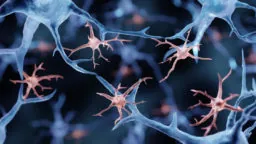Dr. Steven Austad of the University of Alabama at Birmingham is not a typical geroscientist, or at least, he did not become one in a typical way. After obtaining his undergraduate degree in English literature, Steven spent several years on jobs such as a wild animal trainer for Hollywood before deciding to study biology, and his transition to the biology of aging happened even later. Today, Steven is one of the most prominent figures in geroscience, with a focus on aging in animals in the wild and on improving the ways we study aging in model organisms in the lab.
Steven wrote one of the first popular books on geroscience, Why We Age, and his second book, Methuselah’s Zoo, will be published later this year. We talked about a range of topics, from Steven’s fascinating personal history to his famous bet against Dr. Jay Olshansky, with many insights on biology of aging and on the current state of geroscience sandwiched in between.
Your personal story is unusual – at least, for a scientist. How did you become involved in the biology of aging?
I ended up by a very strange path in longevity research. I did my PhD in animal behavior, and I really had never even thought about issues of longevity. I was a field biologist doing a postdoc in Venezuela.
This was a project on opossums. Opossums are about the size of a house cat, so I assumed that they lived as long as a house cat. This project had nothing to do with aging, but it made me realize that within a few months, opossums went from vigorous, healthy, young-looking adults to being old and decrepit: they got cataracts, their muscles wasted away, they got parasites, and this happened so rapidly. It just struck my attention. I couldn’t believe it, and I couldn’t understand it. And it made me think about why do things generally age faster or slower?
So, this got me interested in the field. In fact, the paper that came out of the project I was working was published in Nature, but by the time it came out, I totally lost interest in that field and focused my attention on longevity and aging, because it seemed to me a much more interesting problem.
But it was an intellectual problem for me. I wasn’t really thinking about the human implications, I was thinking why evolution can take a single fertilized egg and mold it into a healthy young adult, whether it’s a dog, a frog, or a bird, but for some reason, it cannot maintain that healthy young adult phenotype. Why would that be? That was the question that motivated me. And I was in the field for at least a decade before it ever occurred to me that what I was studying had human implications. But once it did, I thought, oh my goodness, this has so many major repercussions for life over the next decades that it deserves to be the focus of my future research.
I just have to ask: did you find the answer about the opossums?
There’s an evolutionary theory of aging that suggests that animals that have evolved in relatively safe environments will be slow-aging and long-lived relative to animals that evolve in hazardous environment.
In most of the opossum range, about 80% of them are killed by predators before they have a chance to die of old age. So, I studied the opossums on an island that was lacking all the predators, and I found out that they did age slower. They’d been there for probably 5,000 years.
But how do they do that? What changed over that time? At that time, I wasn’t really interested in that kind of question, though. So, I left that study as it is without ever exploring that. Years later, I thought about returning to it because it still is very fascinating. Now, we can have an opossum genome and we have all these new tools, and we could really do something with this.
In the interim, I went back to the island with a film crew that was doing a piece on aging and wanted to feature this work. When I went back, I discovered that since I left, someone had introduced a lot of new animals into the island, and there were new species, and I was no longer certain that the island population was completely isolated from the mainland.
So, I wasn’t sure that even starting to analyze the genome would give me the answer I wanted, because whatever genes had been selected for on the island had been diluted out by more recent immigrants.
But that same idea that animals living in safe environments on islands will evolve slow aging caused me to try to replicate this whole process in house mice. I actually went around the world, collecting mice off of tropical islands, mice that had been introduced there sometime in the last 400-500 years.
But it turned out I didn’t do that in a very smart fashion. I ran into the same problem that I ran into with the opossums: I had collected my mice near the port, which is always where the main town is. And of course, near the port, there’s going to be recurrent introductions of these animals off of ships. So, they weren’t the pristine isolated island populations that I was searching for, which is too bad.
I’m still thinking I might, at some point, go back because it’s very curious. We have all these ways now in the laboratory to make mice live and stay healthy longer, but we don’t know how nature might accomplish the same thing. It might be a completely different mechanism.
Studying wild animals in the context of aging is pretty unique. Are you aware of anyone else doing that?
I’m not, and it’s too bad because one of the problems that we face with our laboratory organisms is that we can make them live longer, but can we really maintain their health longer? After all, that’s the thing humans care about. But it’s not easy to assess health in lab animals the same way that we would in humans because in the laboratory, there are no challenges. If you are a lab mouse, all you need to do is walk across the cage to eat, your temperature is controlled, you’re eating the best diet, you’re not in danger from infectious diseases.
Animals living in the wild, on the other hand, are facing dramatic challenges all the time. And the fact that they have lived a certain amount of time in the wild suggests that they have been able to maintain their health for that amount of time.
But how do you do a controlled experiment in the wild?
You have to think about this in a different way. In laboratory animals, we try to figure out how we can manipulate them, knock out a gene, or change their diet, or give them a drug to make them live longer.
In wild studies, what we do is we will choose some exceptionally long-lived species, compare them with some short-lived species, and try to figure out what the key differences are. We’re not trying to demonstrate that they’re long-lived and slow-aging, we already know that.
It’s a different experimental approach, and it’s very difficult, because any two species differ in many ways. The best situation is that, like with my opossums, you find the same species, but in situation one, it lives a very long time, and in situation two, it doesn’t. That narrows your search, and that’s why I liked that island paradigm so much. But those situations are difficult to find.
What else are you working on right now?
One of the things I’ve always been interested in is which animals we choose to study aging in, whether in the laboratory or in the wild. So, I’m working on developing new animals to study in the laboratory, and I’ll tell you why. Right now, the entire biomedical enterprise has settled on the mouse as the mammal. But there are 5,000 species of mammals. Why we would settle for one is not clear to me because we don’t know how idiosyncratic mice might be.
They might be very unusual mammals, but if we don’t study aging in any others, we’ll never notice that. I think that this reasoning is shown by the fact that recently there’s this new program in the field called the C. elegans Interventions Testing Program. It’s using Caenorhabditis nematodes to find drugs that increase longevity.
So, it’s like the ITP, but in worms?
But here’s the difference: instead of just using C. elegans (Caenorhabditis elegans), they’re also using two other closely related species – C. briggsae and C. tropicalis. And one of the very consistent things they’re finding is that the species differ in the impact that the drugs have on them.
Just to take one: metformin universally increases longevity of C. elegans and universally has no effect on C. briggsae. In fact, if you look at a whole series of drugs, it turns out that C. elegans quite often will live longer when exposed to drugs, and C. briggsae almost never does. If you have that kind of difference in response for two closely related species of nematodes, what are the odds that what you’re seeing in one of those species is likely to translate into humans?
And I think the same is true of mice. We’re only looking at one species. And even the Interventions Testing Program, which I think very highly of, is only looking at a certain genotype, although a heterogeneous one. To me, that’s not enough. We don’t know if what we find in mice will have any relevance whatsoever to people.
We know that cancer treatments that work in mice tend not to work in people, it’s a 90% failure rate. In mouse Alzheimer’s versions, we have over 300 therapeutic successes, and so far, zero in humans. That suggests to me that we really need to bring a few more species into the laboratory to investigate, and there are some. It used to be that rats were more common than mice in the laboratory. Rats are very well-characterized, they don’t live any longer than mice. So that would be one that I would bring back.
We should have a small panel of species to experiment on, and it would save us a lot of time and money on doing clinical trials with humans. I think at a minimum we’d want two, ideally, four species. Rats and mice are pretty closely related, they’re like monkeys and humans, so I’d like to see something more distantly related. There’s a small laboratory marsupial, a laboratory opossum that doesn’t live any longer than a mouse. It’s midway in size between a mouse and a rat.
I’d like to see, let’s say, those three species. If you gave them all rapamycin, and they all did very well, with minimal side effects and increased longevity, and all things that rapamycin has been shown to do in mice, then I’d feel very confident that we’re at a point where we would have a high probability of success.
Just how misguided this reliance on laboratory mice makes us?
I don’t think we know that yet, but I’m concerned that it could be very misleading. A lot of the excitement in the field has come about because we found so many ways to extend life in mice. It used to be thought this is going to be very difficult, and it’s turned out not to be difficult, but what if mice are like C. elegans, when almost anything you do extends lifespan, and we’re like C. briggsae, and there are only a handful of things that may work for us? I’m quite concerned that we may be very much misled by focusing only on a single species.
I think it’s a big issue in the field that we need to pay attention to. If we have two, three, or four human trials of interventions that have worked well in mice, and none of them work in people, I think people will begin to think it’s impossible to medically intervene in aging and extend human healthspan and lifespan.
And I don’t believe that’s true. I believe that we can do it. Nature has done it again and again. But we need to know the right way to proceed. And I’m not sure that focusing all our efforts on the mouse is going to lead us in the right direction. It may, but we don’t know that.
You have a book coming out this year called Methuselah’s Zoo, and I’m really looking forward to reading it. Can you give us a sneak preview?
In Methuselah’s Zoo, I go into animals with exceptional longevity. First, I talk about insects, tube worms, sea urchins. Then I go right up through all the phyla, and I describe each of them in a lot of detail. How do we know how old they are? For instance, the Greenland shark supposedly lives up to 400 years. But how do we know that? How reliable is that?
And then I ask what we can expect to learn from the fundamental biology of that organism? Just to give you a little a preview: I don’t think we have a lot to learn about human aging from this 400-year-old shark. On the other hand, if you take another long-lived marine animal, the bowhead whale, I think we have a tremendous amount to learn from that.
When you see such long-lived mammals, it’s tempting to think that we can somehow emulate this, but you seem to think that we, humans, have a hard limit of about 100-120 years? Do we have any chance of achieving what is called extreme life extension?
I guess it depends on what you mean by extreme. I think that there is a limit, certainly. Unless we do something dramatic to human biology, we’re not going to see any 200-year-old or 1000-year-old people. On the other hand, if we tinker with human biology, I’m quite confident that we could increase longevity by 20%.
So, instead of life expectancy being 80, it will be a hundred. And the reason I say that is that’s about as much an extension as we can regularly achieve in our laboratory animals. So, as a target, that seems reasonable. If we have five ways to make a mouse live longer and a couple of ways to make a rat live longer by 20 or 25%, that seems like something that should be achievable in humans. The idea that we’re going to create humans that live 500 or a thousand years, seems to me, quite frankly, crazy, because we haven’t been able to do that even in the most well-described experimental animal systems.
To think that we’re going to do something vastly better in humans than we’ve been able to do in these other animals where we can manipulate their genome, and their environment, and everything else… This just strikes me as impossible. it’s almost touching, though. I admire the aspiration to do that, I just don’t think it’s very realistic.
That brings me to my next question. Many geroscientists have this feeling that the gains we’ve been seeing are based on eliminating or neutralizing the bad things that we do to our body, sort of “going back to normal”. Do you think that geroscience might hit the wall after we eliminate all those bad influences?
In fact, I think that’s what 20th century medicine has been focused on. Let’s cure cancer, let’s cure heart disease, let’s cure Alzheimer’s disease. That’s what we’re really trying to do with geroscience, and I think we’re succeeding to prevent all these things in our experimental animals. The idea behind geroscience is, of course, that if we can target the aging processes themselves, it will push back all these diseases and disabilities of later life. I think we make a mistake by focusing only on things that kill us, because there’s a lot of things that just degrade the quality of later life like vision loss, osteoporosis, joint pain. There are things that we would like to push all back as a group, and there’s a lot of evidence that with some of the interventions, we’re doing that in laboratory animals.
The strongest evidence is for rapamycin that delays a number of things in mice. It’s astonishing. So, I think that we’re really slowing aging with that.
You have talked a lot about calorie restriction, but you seem to be less optimistic about it than the most.
I am, for several reasons. First of all, I think that eating a healthy diet and maintaining a healthy body weight is very important. In fact, it’s probably the best thing besides not smoking that you can do to maximize your longevity today. But the idea that manipulating our diet, let’s say reducing our calorie intake by 30% or so, is going to increase our health, is not a promising approach.
First of all, we don’t know how to translate what they’ve done to rodents into people. We don’t know if what they’ve really done is taking obese animals and making them less obese and thus healthier or taking healthy-weight animals and making them extremely lean and thus even healthier.
We don’t know that. This is shown by the two monkey studies that were done that really came to different conclusions. In one study where they had animals with healthy body weight and they additionally reduced weight, they saw no effect on survival at all. In the other study, they let them get obese, as captive monkeys or almost any captive animal will, because it doesn’t have the room to move around, and then they reduced their weight to normal with multiple benefits.
But we already know that. We know obesity is bad and normal body weight is good. What we don’t know is whether exceptionally low body weight is any good. The human studies that have been done, short term and all, really haven’t produced the extreme leanness that, say people in the Caloric Restriction Society tried to achieve. So, yes, watching the diet is important, but it’s not clear that extreme leanness is the road to extreme longevity. In fact, I think the weight of the evidence is probably against that.
I understand that for humans, you put more faith in fasting than in calorie restriction.
Yes. It seems that a lot of the advantages of calorie restriction are not necessarily from the amount of food that had been eaten, but from the timing of when the food was eaten. That’s very interesting because, first of all, it’s doable. Only a very small fraction of people could restrict their diet by 20% or 30% year after year. But eating all your food in a 12-hour window – that’s something almost everyone can do. We know now that a lot of the beneficial effects of calorie restriction seem to be mimicked by a period of fasting.
This shows a great deal of promise – not for making us live an average of a hundred years, but for getting more and more of us to live into their eighties and nineties. There are enough people already doing it now, it’s become quite popular. Still, I don’t know if there’s any advantage to it beyond maintaining healthy body weight.
But we still have some things to learn. There’s probably a lot of individual variations. You may be different than me, the environments that we’ve grown up in probably have been different, or our genes are different. We need to figure that out, as well as is there a best time window for fasting? Should you eat when you first get up in the morning and stop mid-afternoon or should you wait until noon? After all, around 85% of all the genes in our body are on a daily rhythm. They turn off and on at certain times. It may be that when we eat is as important as how long we fast.
And this points up another of my worries about using mice as laboratory animals: we really mess up their daily clock in many ways. We do most of our experiments on them in the daytime when they would normally be sleeping, because they’re nocturnal. The way that we have bred them in the laboratory has led most of them to lose the ability to synthesize melatonin in their pineal gland.
Also, if you think of the way that light and dark cycles, which our bodies have evolved to be in tune with, work in the real world, what happens is that late in the day, it starts to get dark and cooler. In the laboratory, we never change the temperature, and we flip the lights off and on at a certain point. It’s not a good replica of the situation in which these animals have evolved for millions of years.
I guess there are more problems with our current animal studies.
There are several things that we don’t take account of in our animal studies. For one, we typically raise our animals in separate cages. There might be four or five animals per cage, and 10 cages in a study. But we don’t look at the cage effects. This could be an important factor. For instance, when an animal dies, it changes the social environment. If there are four mice per cage, late in life, some cages will have one mouse left, some will still have three mice. That’s the kind of thing that we’ve pretty much ignored in the field because it costs more money to do a bigger, more complex experiment.
This is also why people have resisted adding both sexes. It used to be that mostly males were studied. And then the National Institute on Aging dictated that you need to use both, but that doubles the cost of your study, unless you have fewer of each, in which case you don’t have the power to distinguish. One of the things that we have to discuss that could turn out to be really important is the way that some interventions work in one sex, but not in the other.
If you think about human medicine, there’s virtually no medicines that females are assumed to respond to differently than males. But we know from recent work in mice, that at least some types of neuropathic pain are experienced differently. Mechanistically, pain signals are transmitted differently. Drugs that help male mice relieve pain will not work in females.
We’re just starting to think about this in humans. Ultimately, I think there’s likely to be some anti-aging interventions that do well in women, but maybe not so well in men and vice versa. The future, of course, is going to be personalized health because soon, all of our genomes will become part of our medical records. I think the first place we’re going to see the impact of personalized health is in female and male-specific approaches to treating and preventing diseases.
Your first book, “Why We Age”, was a pioneering one, published long before most other popular books on the science of aging. Given a chance, would you publish a new edition now, with just a few alterations, or have the science and your views changed too much?
I have been asked to do that many times and I have always resisted, because it felt like kissing your sister or something – it just wasn’t satisfying. And you’re right, when I wrote that book, there were very few popular science books in aging. So, I felt I could make a real contribution by bringing what we knew at that time into popular view.
Now I think there actually are quite a few very good books about aging. What I thought I had unique to say, had to do with expanding the research bestiary, which is why I wrote Methuselah’s Zoo. If somebody said to me let’s go back to Why We Age and bring it up to date… So much has changed. It would really be a brand-new book. And there are some excellent books already out there, so I don’t think I’d make that much of a contribution.
That brings to mind your famous bet against Jay Olshansky. Is the bet still on? Has your prognosis somehow changed?
Jay Olshansky and I originally made this bet in 2001. We put $150 each into an investment account. I had claimed that somebody was already alive in 2001 who would live to be 150 years old by the year 2150. If someone has lived 150 years, then my descendants would get all the accumulated money, and if not, then his descendants would get all the money. By the way, we calculated that, at the historical rate of growth in the stock market, it would have been worth about half a billion dollars by 2150. We doubled the bet at the urging of a journalist – I think it was in 2015.
So now, it should be worth about a billion dollars in 2150 and, actually, Olshansky has been investing the money very wisely and has done better than the stock market. He had it in Tesla at one point. Unfortunately, he took it out of Tesla a couple of years ago, which is too bad.
I think we’re both still confident that we’re going to win the bet. He’s probably confident, because when we made the bet, no one had lived longer than 122 years. And now, 20 years later, still no one has lived longer than 122 years.
I, on the other hand, am looking at all the animal research and finding this proliferation of interventions that help them live longer. By the way, 150 years is 20% longer than 122 years. So, if any of these things really pan out in humans, then I’m likely to win my bet. The other thing that gives me confidence is that we used to think that for an intervention to really have a major impact on longevity, it had to be started early. We know now that’s not true because drugs like rapamycin can be started at the mouse equivalent of 60 or 70 years and still have a dramatic effect on lifespan.
If you put those two things together, I think that we’re likely to come up with interventions that we could start in people, say in their fifties, that could maybe get one of them to live to 150. I’m not saying that life expectancy will be 150. Only one person has to live to that age, but they have to be mentally intact, they have to be able to carry on.
So, it’s going to be a woman because women live longer than men. I would guess it’s probably going to be a Japanese woman because Japanese are the longest-lived people on the planet right now. By the way, I think that by the year 2150, a hundred-year life expectancy for humans is very plausible.
So, you think that an outlier can live 50% longer?
Yes. Life expectancy is roughly 80 today, and Jeanne Calment lived till 122 years. 150 is the same thing, but with a life expectancy of a hundred. There’s my winning bet.
Unless we all become half-androids by that time, in which case I’m not sure how the bet could be resolved.
That would be a problem, wouldn’t it?
We began with your personal story, and I probably asked the wrong question. I was wondering how a person who wants to become a novelist and tries all kinds of exotic occupations suddenly decides to go back to school and do a PhD in biology?
In college, I had my undergraduate degree in English literature, and I indeed wanted to be a great novelist. After I got out of college, I had a whole variety of jobs that would give me money and time to write my novels. Since you’ve never heard of any of my novels, you can probably figure out how that turned out.
One of the jobs, though, that I finally ended up doing was training wild animals for the movie business. I trained mostly lions, but a few other species too – a few tigers, an elephant, a bear. That reawakened an interest in biology that I’d always had. I guess it just wasn’t a conscious interest.
And then I decided that I didn’t want to be a movie animal trainer for the rest of my life because it was a hazardous occupation. I actually got injured pretty bad once and I had three weeks in the hospital to think about my future. I thought, since I’ve been studying animal behavior in this kind of applied way, I would like to maybe go back to school and study it in a more scientific way.
When I was still working in the movie business, I started taking science classes because as an English major, as an undergraduate, the only thing I had taken was microbiology for poets or something like that. I had no science background, so I just went back and took all the science classes – the chemistry, the physics, the biology – to make sure that this is really what I wanted to do.
I started graduate school when I was 30, but it was clearly the right thing to do. I’ve loved it ever since. I can’t imagine anything that I’d like to do more. I still have my love of writing. I like to communicate the science to the public. My training in literature has probably been helpful in that. But this is the most rewarding type of life I can imagine because how many people get paid to think? And that’s really what I feel: that I get paid to think and write down what I think and try to figure the world out. It just makes the world an endlessly fascinating place.
This is really inspiring. There’s a misconception that you have to possess a special ‘scientific’ mind to do science, you have to start early, and to go through all those stations really quickly if you want to succeed.
This is not like gymnastics, where you have to start when you’re ten if you want to compete on a serious level. Here, you just need to be willing to do the work, to learn the background, to learn the style of thinking in that particular field.
And I tell students this all the time. I say, if you don’t know what you want to do, even after you get your PhD, you may decide to go into something completely different. It’s possible. The most important thing is you have to be willing to put in the work. And if you enjoy the work, then putting in the work is easy.
What are the most promising anti-aging interventions around today, both practically and theoretically – from the small molecules that are being tested to gene therapy?
I think gene therapy is out. I don’t think that’s going to be a contributor. Huge contributions are going to be in combinations of some of these drug interventions, but also in combinations with lifestyle interventions.
I believe that where combination drugs are going to come in is in countering the side effects of one another. One of the side effects, for instance, of rapamycin is that it can be diabetogenic. On the other hand, it’s exactly what metformin is good for. So, this particular combination could be really useful.
Combine that with the right lifestyles – and I think we could be looking at something really exciting – or not. We don’t know, most clinical trials fail. But if we did a trial like that, I would have a reasonable level of confidence that we were going to find something interesting.
As a veteran in the field, do you think that the longevity community is still small, misunderstood and strapped for cash, or do you see things starting to change?
It’s getting far less strapped for cash now that there are so many private investors interested in the field. The number of investigators is growing, though not dramatically.
I think a lingering problem in the field is the number of bogus scientists that are out there or people pretending to be scientists. This has always been a problem in aging research, of course. Probably 2000 years ago that were someone on the back of a wagon trying to sell you a pill or a potion or an ointment that would keep you young forever. I think that problem has gotten worse and worse.
But at the same time, we’re making serious progress. We really do understand a lot about the underlying process of aging now. Everything in the field points up at this point – more money, more scientists, more promising avenues of research. I’m quite confident that the field is going to be vigorous, and grow, and really be contributing over these next decades.
We would like to ask you a small favor. We are a non-profit foundation, and unlike some other organizations, we have no shareholders and no products to sell you. All our news and educational content is free for everyone to read, but it does mean that we rely on the help of people like you. Every contribution, no matter if it’s big or small, supports independent journalism and sustains our future.

